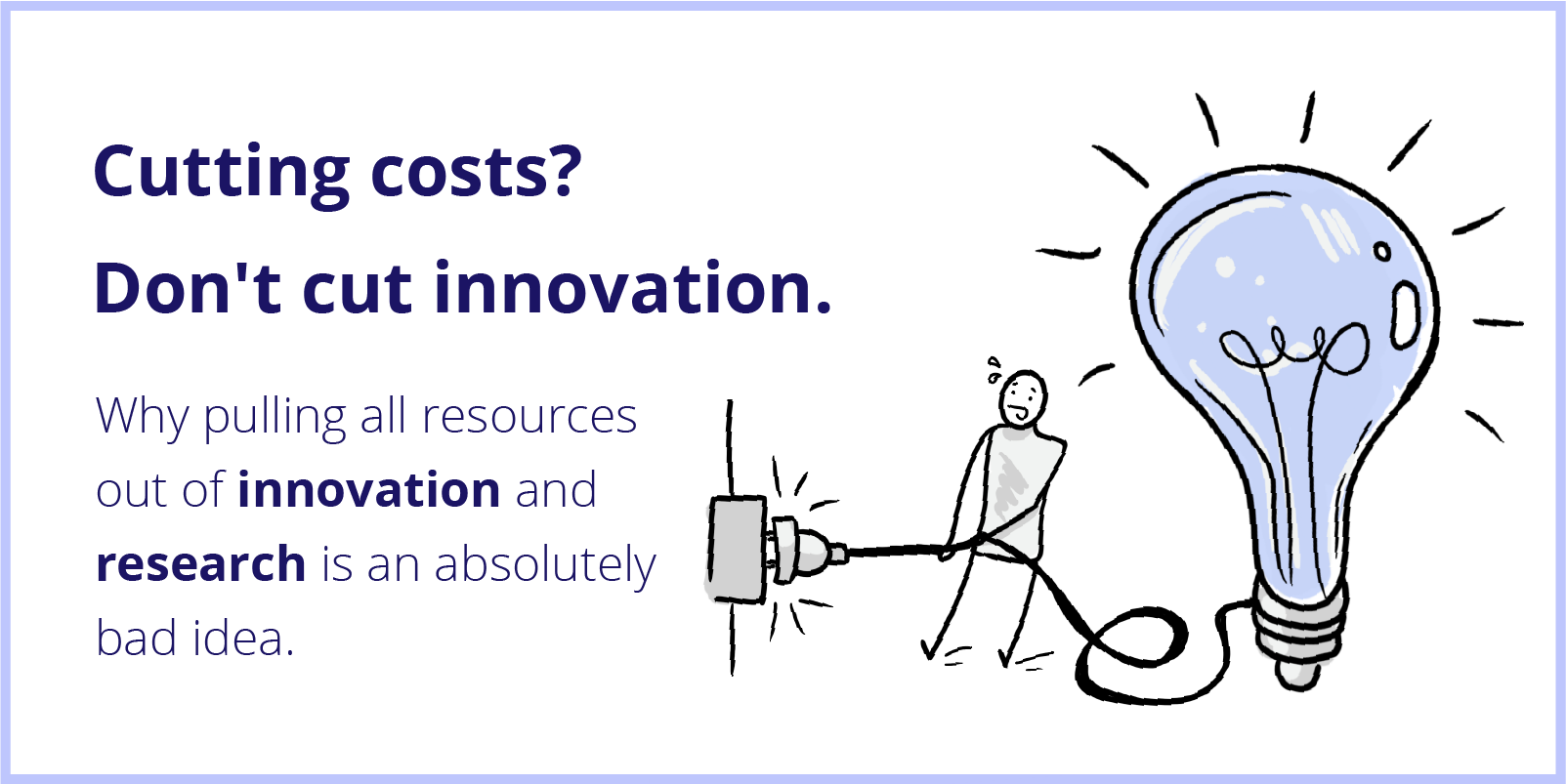It’s hard to think ahead when your house is on fire. But that’s exactly what we all need to do now.
The sudden, global economic crisis brought by the COVID-19 pandemic challenged companies in all industries to not only manage their resources in the short term but also set themselves up for what comes in its aftermath. Because there will be an aftermath.
Savvy leaders always see the opportunities hidden within a crisis. Our current period of challenge will likely cause some businesses to make lasting changes in how they work, how they sell, how they deliver, and what they offer customers. Almost certainly, someone will come out of 2020 ready to disrupt how things are done in your industry. You need to be ready for the competition.
Right now, you are probably just trying to keep moving forward, one day at a time, in a climate of uncertainty. But for your organisation to not only survive a crisis but thrive afterward, you need to try to maintain a balance between what McKinsey defines as the Three Horizons of Growth: delivery, innovation, and research. And, ideally, you need a person or team within your organisation to serve as the advocate, or champion, for your innovation and research.

The recommendations we are making in this blog post (and in our new book published by O’Reilly, Cloud Native Transformation) are approximations, to demonstrate the relationship between proficiency, innovation, and research, not hard-and-fast definitions that you must hit exactly (or else).
They are based on our own experience with what we have observed works well in companies that achieved not just a successful Cloud Native transformation but also a new ability to respond to changing circumstances as they arrive.
Staying in Balance
Ideally, an organisation that is on a trajectory to grow would invest 70%–80% of its revenue on generating today’s cash flow (delivery), 15%–25% of today’s revenue on generating next year’s cash flow (innovation), and 5% to generate the cash five years from now (research).
But many enterprises focus too much on delivery—or proficiency, getting good at delivering their core business—and not enough on creativity and innovation, to produce their future goods and services. Their horizon ratio of delivery/innovation/research is more like 94/5/1, or even 95/5/0. They care only about the products they are selling right now.
Startups, by contrast, focus largely on innovation—that’s why they exist. They live mostly in Horizon 2, innovation, where 80% of their effort lies. But they may dabble in research (10%), and of course they are working their way as fast as they can to inhabit Horizon 1, delivery (10%).
Dedicating 5% of a company’s resources to research may not sound like a lot, but it’s crucial. That 5% is where you are gaining knowledge and retaining your ability to be creative when necessary. Where this goes wrong, where companies end up in trouble, is when they are not thinking—there is no strategy—and they try to move straight from research to delivery.
You need to experiment before a crisis or major change hits, so you have somewhere to move when it arrives. If the crisis or disruption hits and then you try to move, it’s always too late.
The Smart Way to Cut Costs
Sometimes, proficiency is, for the most part, what a company needs, with side initiatives into innovation and pure research. And these can even go to zero, temporarily, if needed. But not for long.
An example would be when quality is suffering in an enterprise’s main offering, and focus needs to be fully on delivery for a while. But this is a temporary pause, and in a healthy company (especially one with a champion for innovation at the organisation, a person or team focused on Horizon Two) once the crisis passes, the ratio gets rebalanced.
There is another scenario, however, where many companies do exactly this—pull all resources out of innovation and research in order to focus on the bottom line—and it is absolutely the wrong move.
This would be when a company is under serious pressure from a new competitor, or a previous competitor that has introduced something new that is disrupting the whole market. Suddenly the established company is rapidly losing market share, and its leaders panic.
The most likely path for a traditional company in this case would be to start cutting costs, especially in development. In times of distress, the R&D department is the first to suffer.
But by doing this, the company is basically guaranteeing that it will not ever be able to adapt to the new market conditions and emerge as an equally strong contender.
Of course, cost cutting is essential for survival in times of crisis, and likely it will be this year too. But the smartest thing to do is to cut costs across all horizons, instead of throwing away all your investment in innovation and research first.
A Paradox for Leaders
Below, you can see an illustration of the paradox business leaders face.

At point A, a CEO might say, ‘Let’s do something strategic!' But the whole organisation would scream, ‘Why would you do this now? Are you mad? We are profitable, things are going well!'
So this is the paradox. You should be experimenting and investing in Horizon 2 and 3 all the time. This means you can jump onto the next curve at point A, where you are strong.
Most companies don’t invest in Horizon 2 and 3 and only start to look for new business models at point B. But at this point, you are too demoralised, too tired, and don’t have any money left. You can’t catch the next curve.
Horizons 2 and 3 put you in a state of constant readiness. Cutting spending on Horizon 2 during a crisis will cost that next wave, which is the thing likely to lead to a breakthrough product that your customers actually want. This is the paradox; when the crisis hits, don’t stop spending on Horizon 2.
Don’t give in to fear. Start preparing now for what comes next.
Jamie Dobson and Michelle Gienow contributed to this article. Photo by Ameen Fahmy on Unsplash




 Previous article
Previous article
